Ridiculous animal names. Why are they so, or funny names of strange animals
On World Animal Day, find out where to see pop-eyed monkeys and mustachioed imperial tamarins
Nature has a great sense of humor. This can be understood from a single glance at some animals. On World Animal Day, we have selected the funniest ones - look and smile.
- The funniest animals in the world - imperial tamarin
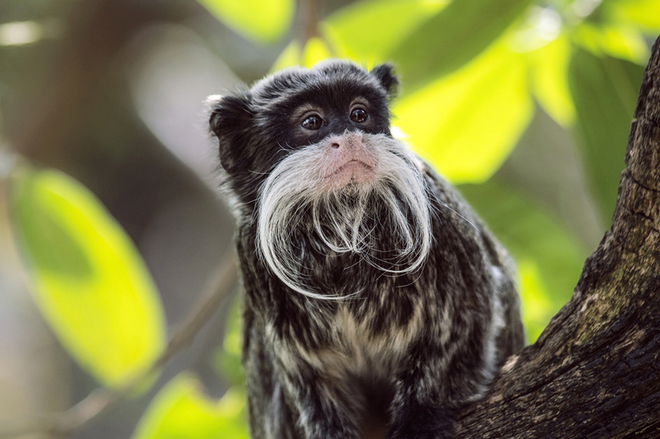
TOP 7 funniest animals in nature: imperial tamarin © Depositphotos
- Who it: primate, chain-tailed monkey.
- Where does he live: in the rain forests of the Amazon Basin in areas of southeastern Peru, northwestern Bolivia and northwestern Brazil.
- What it looks like: Imperial tamarin is immediately recognizable by the long white mustache hanging down to the chest in two strands. These mustachioed animals spend a significant part of their life in trees, where large species of monkeys cannot climb.
- What size: body length - 23.3-26.4 cm, tail length - 36 - 42.1 cm.The mass of adults is 180-250 g.
- Interesting: tamarins in most cases live in groups of 2-8 individuals. Such groups have their own positions and ranks, the old female - at the highest. Therefore, males look after children and carry them on themselves.
- Where to see: London Zoo (ZSL London Zoo)
- The funniest animals in the world - fennec fox, or mini fox
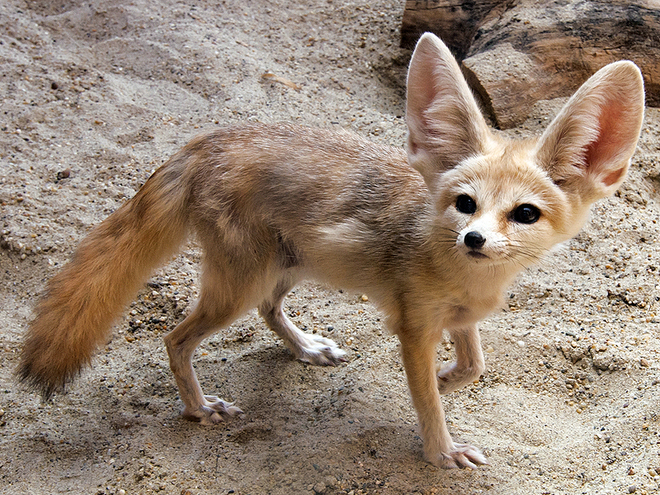
TOP 7 funniest animals in nature: fenech © Depositphotos
- Who it: miniature chanterelle, the smallest canine.
- Where does he live: North Africa.
- What it looks like: fenk is impossible not to see, it immediately stands out big eyes and ears. The fennec has a characteristic high, thick and soft white-red coat. But young mini chanterelles are almost white in color. Fenkies also bark, whine, howl and even hum.
- What size: the size of a fennec fox is slightly smaller than a domestic cat, 22 cm in height and up to 40 cm in length. Weight - up to 1.5 kg.
- Interesting: fennec in their works were mentioned by many famous writers - Main Reed in "Young Hunters", Antoine de Saint-Exupery in "Planet of People" and "The Little Prince", Henri Troaille in "Hunger of the Lion Cubs" and "Catastrophe", as well as Sergei Lukyanenko in "Transparent stained-glass windows".
- Where to see: Dubai Zoo, Chomutov zoo in the Czech Republic.
- The funniest animals in the world - lori
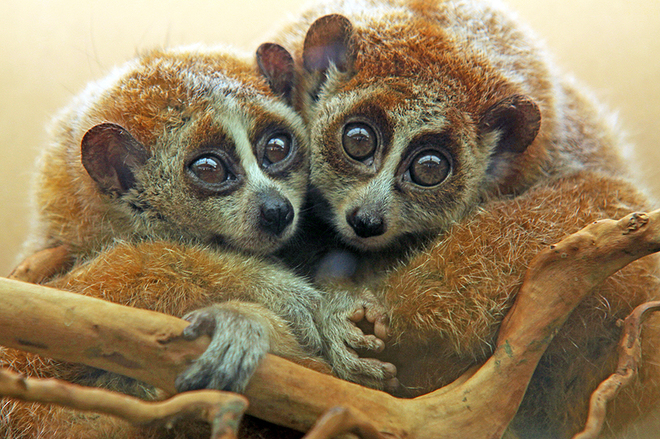
TOP 7 funniest animals in nature: lori © Depositphotos
- Who it: primate, belongs to the series of loriformes
- Where does he live: India, some regions of China, countries of Southeast Asia.
- What it looks like: a cute monkey can be recognized by large and beautiful eyes, which are often surrounded by black circles.
- What size: loris body length is small - from 22 to 44 cm. Their tail is of different length or is completely absent.
- Interesting: Lori is an incredible tree climber. During the day, the animal sleeps, hiding in a hollow or dense crown, but at night it has fun and actively spends time. This animal can easily hang upside down for hours, grabbing the branches of trees.
- Where to see: London Zoo (ZSL London Zoo), Riga Zoo.
- The funniest animals in the world - nosy
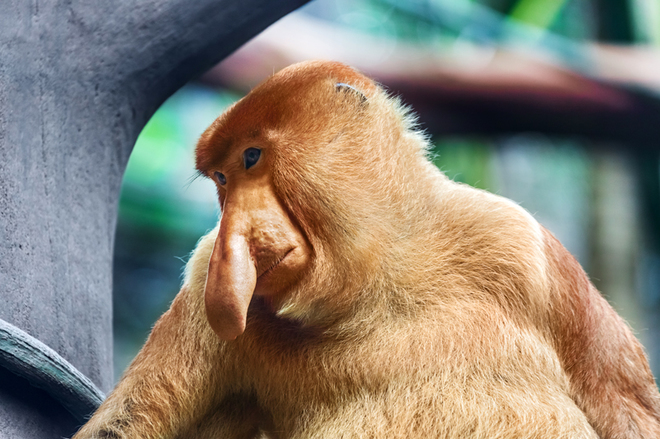
TOP 7 funniest animals in nature: nosy © Depositphotos
- Who it: a species of primates, belongs to the monkey family
- Where does he live: inhabits coastal regions and valleys of Borneo
- What it looks like: the most characteristic feature of the nose is its large cucumber-like nose. However, this is characteristic only of males. The hair of the noses on the underside is white, on the upper side it is yellowish-brown. The tail, arms, legs are gray, and the face is red and without hair.
- What size: in length, the noses reach from 66 to 75 cm, the tail is approximately the same size. The weight of males is from 16 to 22 kg, the weight of females is two times less.
- Interesting: Nos are also excellent swimmers, they can jump into the water just from a tree and cover a distance of up to 20 meters, diving under the water. Among all primates, the palm in swimming belongs to them.
- Where to see: Singapore Zoo.
- The funniest animals in the world - narwhal
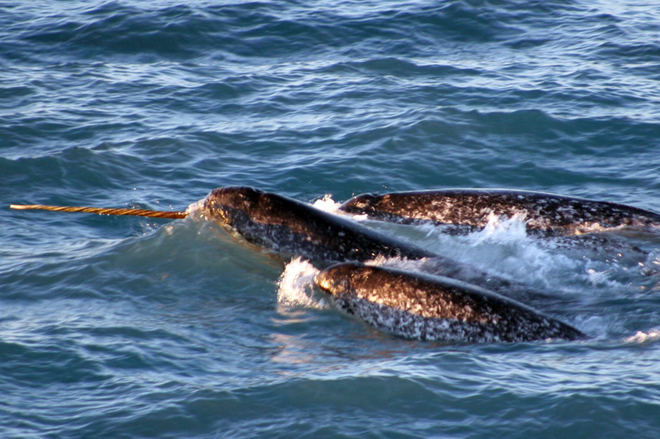
TOP 7 funniest animals in nature: narwhal © wikimedia.org
- Who it: unicorn, a mammal of the unicorn family.
- Where does he live: water area of the Arctic Ocean and the North Atlantic
- What it looks like: narwhals are similar to belugas in size and body shape, pectoral fins. But adults can be distinguished by gray-brown spots on a light background, which sometimes merge. Narwhals have only two upper teeth.
- What size: the length of narwhals is 3.5 - 4.5 m, the body length of newborns is 1.5 m. The weight of males is 1.5 tons, about a third of the total mass is fat, females weigh approximately 900 kg.
- Interesting: the tusk of the narwhals is a sense organ. Thanks to him, animals can sense changes in pressure, temperature and the concentration of suspended particles in the water.
- The funniest animals in the world - sifaki

TOP 7 funniest animals in nature: sifaka © Depositphotos
- Who it: a species of primates from the Indriaceae family
- Where does he live: Madagascar
- What it looks like: long and silky coat, the color varies depending on the species: from yellowish-white to black-brown. The round muzzle is black and hairless. Like all primates, sifaki love to spend time in trees. They eat the leaves and flowers of trees.
- What size: small sifaki - up to 55 cm in height, and weighing no more than 6.5 kg. Moreover, the length of the tail of these monkeys can be up to 50 cm.
- Interesting: this species of primates was discovered only eight years ago.
- Where to see: Zoo Maryland (Maryland Zoo) in Baltimore, zoo and botanical park in Mulhouse, France.
- The funniest animals in the world - alpaca

TOP 7 funniest animals in nature: alpaca © Depositphotos
- Who it: alpaca belongs to the camel family.
- Where does he live: Peru, Bolivia, Chile, alpacas live at an altitude of 3500 - 5000 meters.
- What it looks like: alpacas do not have front teeth, they take food with their lips and chew with their side teeth.
- What size: the growth of the animal is 61-86 cm, the alpaca weighs 45-77 kg.
- Interesting: the ancient Indians killed alpacas by ripping their heart out of their chest. They believed that in this way the animal's fur would be blessed. Alpaca wool is the same in properties as sheep, but much lighter and more valuable - 24 natural shades. Alpacas are sheared once a year, 5 kg of wool is sheared from one individual.
- Where to see: London Zoo (ZSL London Zoo).
Who does not remember the famous "hymenoptera sickle" or "black peaks" and "creepers" from the film "Day of Radio"? Radio station workers courageously rescued “Seven people. And 11 people of animals ", perishing on a single-deck ship KCR-12, with the bright name" Doctor of Science Professor Schwarzengold ". And which ones really exist or, let's say, which REAL animals the most funny names ... Using another well-known quote from the film "Here are the questions, there are the answers!", And we will try to compose our rating " The funniest animals».
The funniest animals TOP 10:
- Hoopoe.
IN explanatory dictionary Dahl indicates 2 no less funny synonyms for Hoopoe - a puff and a puff
The word Hoopoe since childhood makes many people smile, but few know something specific about the Hoopoe. Here are just a few interesting facts... Scientists distinguish the hoopoe in a separate funny detachment of hoopoe (Upupiformes). In Dahl's explanatory dictionary for Hoopoe, 2 no less funny synonyms are indicated - a dummy and a tatuka. Particularly pleasing is the tattoo.
It is interesting that during the period of incubation and feeding of chicks, adult birds and chicks produce an oily liquid secreted from the coccygeal gland and having a pungent unpleasant odor. By releasing it together with the droppings on the enemy, the hoopoes are thus trying to defend themselves - such a flying skunk !!!
Where does this funny name Hoopoe come from? The fact is that these "flying skunks" have unusual vocalizations. Hoopoes emit a guttural 3-5-complex cry "ud-ud-ud", repeated several times in a row. So we got the Hoopoe! Dahl is silent about the origin of the name Potatuyka.
2. Desman
Desman is a relict species of mammal of the mole family of the shrew order. Desman is not only a funny word, but also our own, since at the moment it mainly lives in the basins of the Dnieper, Volga, Ural and Don.
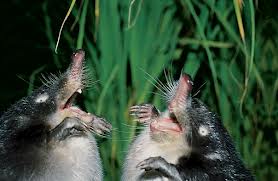
muskrat
Of the interesting facts about Desman, it can be noted that released in 1961 to freedom in Chelyabinsk region Desman took and settled downstream of the river with the no less striking name Uy. The desman has a tail that is covered with horny scales, and along the top it also has short coarse hair forming a keel. Such a hairy turtle tail. The tail has a pear-shaped thickening in which specific very odorous glands are located, so our Desman is our answer to "their skunk". True, unlike a skunk, the smell is not so unpleasant and is even used in perfumery.
But in fact, Desman is a very interesting animal that you can talk about for a long time - here are some more interesting facts from the life of Desman. In summer, desman lives alone, and who is lucky, then in pairs or families, but in winter up to 12-13 desman of different sex and age can live in one hole, but at the same time each animal has its own separate burrows, such one-room apartments in which the desman rests from their relatives! When the desman moves along the bottom of the reservoir, it gradually exhales the air drawn into the lungs. The desman moves along special trenches dug at the bottom of the reservoir. In winter, air bubbles accumulate above the trench under the lower ice surface, making the ice above the trench porous and fragile. This creates conditions for better aeration, which attracts shellfish, fry and leeches. The cunning Desman does not rush along the bottom of the reservoir in search of food, but moves along a system of trenches, to which its victims themselves are actively drawn!
3. Echidna and the Platypus.
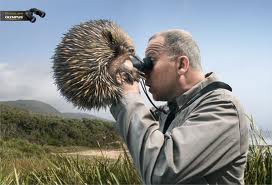
Another funny but popular animal is the Echidna. Echidnas are a family of the order with an equally funny name - monotremes. It is interesting that the same detachment of monotremes, together with the Echidnas, includes an animal with another funny name, Platypus. Thus, not the third place was immediately two funny animals Echidna and Platypus.
From the interesting facts about the Echidna, it can be noted that the Echidna do not need a dentist - they have no teeth! And why do they need teeth if they feed mainly on ants and termites, which they do not chew, with a toothless mouth, but simply press in their mouth, pressing their tongue against the palate. Despite the fact that Echidnas are mammals, the female echidna takes and lays an egg 3 weeks after mating. Then, like a real woman, she takes it and puts it in her purse. "Incubation" of an egg in a bag lasts 10 days. After the cub has hatched from the egg, it is fed with milk, which is secreted from the female by pores in two milk fields (monotremes have not only teeth, but also nipples), and lives in the mother's pouch for up to 55 days. Or rather, until the moment when needles begin to grow. Frustrated by this fact, Echidna digs a hole for the baby, in which she carelessly leaves him. True, once every 4 or 5 days she comes back to feed him with mother's milk. And so she visits him, feeding him practically once a week until the age of 7 months.
4. Evrazhka
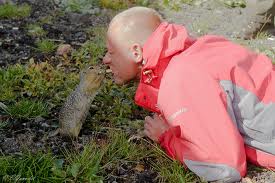
Evrazhka is such a funny name for gophers, common in Siberia and the Far East. Evrazhka is a popular hero of the Chukchi and Eskimo folk tales, and more recently the stories of tourists.
Evrazhki - very, very fond of begging from tourists. Somehow they manage to distinguish tourists from hunters. And very often begging among tourists develops into an ordinary robbery. And the charming impudence of Evrazhek cannot leave almost anyone indifferent. The little girl stealing food, does not eat it right away, but hides it behind her cheeks, well, she just stuffs her cheeks and a full mouth with it. Experienced tourists have fun with Evrazhka in the following way - they roll up small balls of ordinary butter and leave them on the table or on a tablecloth, on the ground, and hide the rest of the food. The impudent and cunning Evrazhka, absolutely not ashamed of the presence of a person, stuffs her cheeks with oil and, stuffing all the oil into her mouth, hurries to hide it all. But after running a couple of meters he stops in complete confusion - the butter has melted and literally just filled to the "cant" mouth and cheeks are empty! Evrashka's muzzle expresses extreme bewilderment and absolute confusion. In such terrible moments of life, Evrazhka stands on her hind legs, turns to laughing tourists and feels her empty cheeks, not believing that she is missing. After that, he returns to the scene of the crime and brazenly demands the addition and replacement of the deception.
5. Pig-footed bandicoot
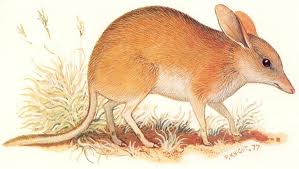
Pig-footed bandicoot
Pig-footed bandicoot. Unfortunately, little can be said about the marsupial mammal with such a funny name, since about 100 years ago, the last funny Pig-legged bandicoots disappeared from the face of the Earth. And before that, they lived peacefully in Australia until they were eaten by foxes brought to Australia. True, their relatives were just Bandicoots.
Interestingly, bandicoots move on the ground by jumping, like a kangaroo. But unlike kangaroos, they land on all 4 legs, and then are repelled by their hind limbs. The exception was precisely the extinct 20s of the twentieth century, the pig-footed bandicoot, which knew how to jump on four legs at once.
Summary of extracurricular activities on the outside world in grade 1
Vylegzhanina Alevtina Alekseevna ,
primary school teacher
first category
MOU "Vidnovskaya average comprehensive school"No. 7
Leninsky district of the Moscow region
Topic of the lesson: "Speaking names in the natural world."
Extra-curricular activity in the 1st grade around the world "Talking names in the natural world"
The purpose of the lesson: to reveal the relationship between the names of some insects, mushrooms, birds, plants and their features;
Lesson objectives:
to acquaint students with a variety of beetles, plants, mushrooms;
show how interesting and important it is to know the names of natural objects;
foster respect for nature
Planned student achievements:
to recognize several studied natural objects;
learn to explain the names of some plants, mushrooms, animals
Course of the lesson
1. Organizational momentToday I invite you for a walk, but guess where:
Who as soon as it gets hot
He will pull a fur coat over his shoulders,
And an evil cold will come -
Throw it off your shoulders? (Forest)
That's right, today we will go to the forest.
Why do you think they go to the forest?
- “They go to the forest for berries, mushrooms, nuts. But what if you go to the forest for riddles? It is interesting to collect berries, mushrooms, nuts, and it is even more interesting to search for riddles. What are mushrooms, nuts! Collect, calm down. And as you search for riddles - so you will lose peace. And how you found a riddle - so give me a clue, then go into the forest, look for a clue. While you are looking, you will find two new riddles. And off we go - there’s no end in sight! ” (Sladkov N.)
Nikolay Sladkov
Was born in ... During the war he volunteered for the front, became a military man ... IN Peaceful time kept the same specialty.
In his youth he was fond of , but later was engaged in , put forward an appeal "Do not take a gun into the forest, take it to the forest ».
He has written over 60 books in total. Together with produced a radio broadcast " ».
He traveled a lot, these journeys are reflected in books. He wrote a lot about the need to protect nature, protect endangered species, and foster respect for nature.
Today we will try to figure out why some of the names appeared.
2. Why was the mushroom named so?
Guess what kind of mushroom it is:
Gray hats,
Ragged legs
They grow under the birch.
What are their names? ( Podborezovik)
- Boletus
- grows under the birches. Rural women in the meadows stir up hay, and at lunchtime they still manage to run into a birch grove to collect these mushrooms. Therefore,
apparently, mushrooms have a second name -obrabki
... His, probably, men came up with: "Our women-women keep up everywhere: Oh! -Branks!"
White mushroom
And here are the winners of all forest mushroom competitions -boletus or porcini mushrooms
! Why are they called boletus? Of course, for the love of pine forests and pine forests.
Why white? After all, the hats are brown (from light brown to dark brown).
But when they cook, these mushrooms will never darken, they will become even more beautiful, whiter. And what a smell will go! And in frying, and in cooking, and in drying - boletus mushrooms are good everywhere!
Chanterelles
What kind of yellow sisters
Hidden in the thick grass?
I see them all perfectly
I'll take it home soon.
Very clean, delicious mushroom -
Both the chef and the mushroom picker are happy.
These yellow sisters
Called ... (chanterelles)
These mushrooms always grow in bulk, in a family. From a distance, the red-haired family may seem like a fox. What were they named for? Yes, for the color of the foxes, probably, and for the habits: cunning fungi, it is necessary to search, they hide cunningly.
Russula
They love damp places in the forest, so look there.
Physical education
Hands raised and shook, These are the trees in the forest. Hands bent, hands shook, The wind knocks down the dew. To the sides of the hand, gently wave, - These are birds flying to us. And how they sit, we will also show, The wings are folded back.
The wind is blowing in our face (they wave their hands in our face) The tree is swaying (swinging from side to side) The breeze is getting quieter, quieter (sit down) The tree is getting higher, higher (reach up on toes)
3. Where did such names come from for plants
Read which word from the suggested lettersS T A E N Y R I happened
PLANTS
Let's talk about plants and try to figure out why they were called that.
Celandine
A decoction of flowers and stems of this plant healed sores, scabs, skin rashes. The body became pure, which is why the plant is called celandine.
Clefthoof
Sit down, look: under the old leaves, there are small flowers, completely inconspicuous, and the stem spreads along the ground, the leaves are one against the other. The leaves seem to repeat
the shape of its hoof tracks. "The artiodactyls have inherited here," and the hoof covered the tracks.
Ivan - yes - Marya An old legend tells that a brother and sister turned into this plant. They are always together: purple leaves are a brother, yellow flowers are a sister.
Touchy
If you touch the fruit of this plant, it curls up sharply and shoots out seeds.
Zvezdchatka
This plant has flowers that look like stars.
Lungwort
The flowers of this plant contain a lot of sweet juice - nectar, from which bees make honey.
- Think about why these plants were named that?
4. Speaking names for animals
But not only mushrooms, plants have a connection between names and their characteristics.
Zhu-zhu-zhu-zhu
I'm sitting on a branch.
I'm sitting on a branch
I keep repeating the letter J
Knowing firmly this letter,
I'm buzzing in spring and summer
.
Who is this? (Beetle)
Yes, there are such names - riddles and animals
Beetle - deer
The horns of this beetle are notable. Isn't it a deer? So they called it.
Rhinoceros beetle
A real rhinoceros: instead of a nose, a horn. Why invent a new word?
ladybug
More than 4000 species are known ladybirds... Why did ladybugs get this strange name? Obviously because there are cows of different colors, with dark and light spots. And "God's" - because these beetles give the impression of harmless creatures: they do not sting, do not bite and, only when captured, release yellow "milk". The bright color of ladybirds warns of their inedibility.
Peacock butterfly
It is easily distinguished by its bright eye-shaped pattern on a reddish background. The eye spots resemble similar marks on the tail feathers of a peacock - hence the name of the butterfly.
Bird - secretary
Unusual bird , she got the name - because of the black feathers on the head that resemble the goose feathers that bailiffs used to wear in their wigs
5. Solving the crossword puzzle
Now let's try to guess the crossword puzzle
A mushroom whose caps shine as if oiled
This plant can shoot seeds if touched.
Fox-like mushrooms
These mushrooms should never be eaten raw, although they are called that.
This plant grows right on the road
This fungus can be found in a birch forest
This flower is loved by bees
Lesson summary:
- We have solved one of the mysteries of nature. But nature will reveal its secrets only if we are careful with it.
Let's walk slowly through the meadow
And say hello to each flower.
I have to bend over the flowers
Not to rip or cut
And to see their kind faces
And show them a kind face.
"Let's live so that our Earth is generous and beautiful, so that clear streams murmur loudly on it, the voices of birds ring, and wonderful flowers bloom!"
Literature:
1.Internet resources: www . narod . ru / klass / wiki /
2. Encyclopedia for children "Biology (publishing house Avanta +)
3.Pleshakov A.A. ... The world around us. (Methodical manual, grade 1. M. "Enlightenment" 2006)
4.Pleshakov A.A. " Green Pages". - M. "Education" 1995.
5. N. Sladkov "Into the forest on riddles" - M. "Enlightenment" 1994.
Sometimes you come across such funny names of animals that, you involuntarily think, the fantasy of scientists has ended ... But everything has its own reasons! The pig-footed bandicoot and the rest of the company are waiting for you in this post.
Evrazhka
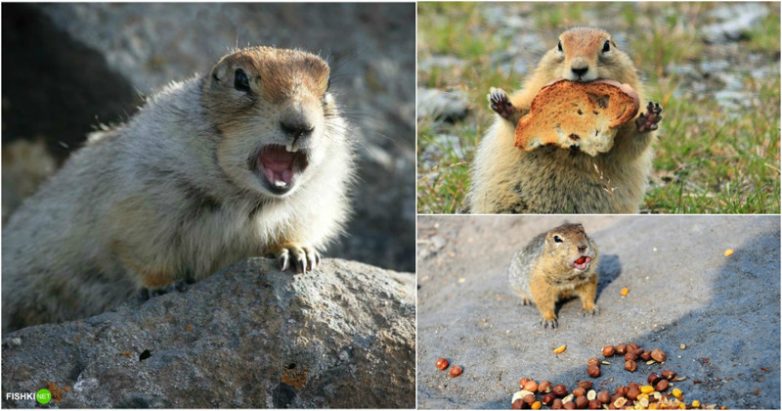
Such a cool name is a colloquial version of the designation of American gophers. This rodent lives in Eurasia (Siberia, the Kolyma Highlands, Chukotka, Kamchatka) and North America.
There are even several proverbs among the people about the Evrazhka:
- The further into the tundra, the more evrazki.
- Better a small euraska than a large cockroach.
- Evrazhka comes with meals.
- The horses are plowing, the women are dancing, and the girls are waving their tails.
- The Chukchi is rich - like a horned Eurasian woman.
- For a hungry evrazhka, seven miles is not a outskirts.
- Evrazhek to be afraid - do not go to the tundra.
Pig-footed bandicoot
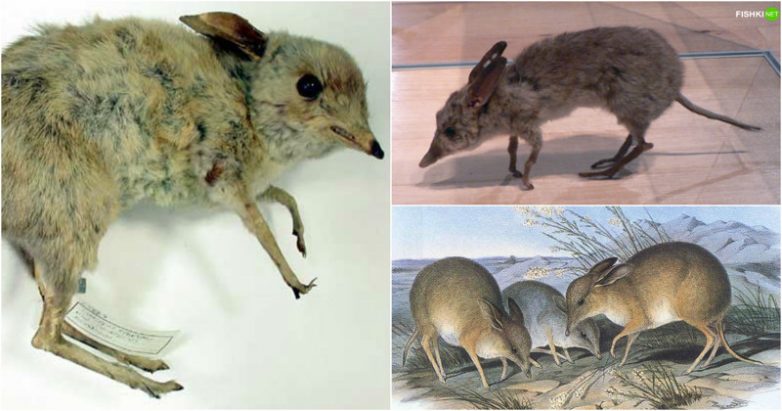
These marsupial mammals are believed to be an extinct species. Previously lived in Australia. They became extinct, possibly due to grazing and eating by imported foxes. This name is given due to the fact that the bandicoot's legs resemble pork hooves.
Evil shieldback
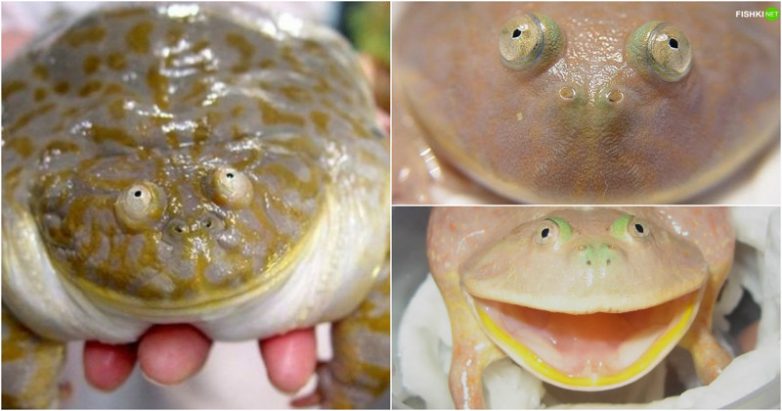
This is the name given to this funny frog with a wide mouth and bulging eyes. Why do you think she is angry? In appearance, it is kindness itself. But among these frogs, cannibalism is common. Plus, in case of danger, the frog swells, stands on straightened legs and widens its huge mouth, showing the enemy two sharp growths on the lower jaw, so do not be fooled by such a cute look.
Dromedary
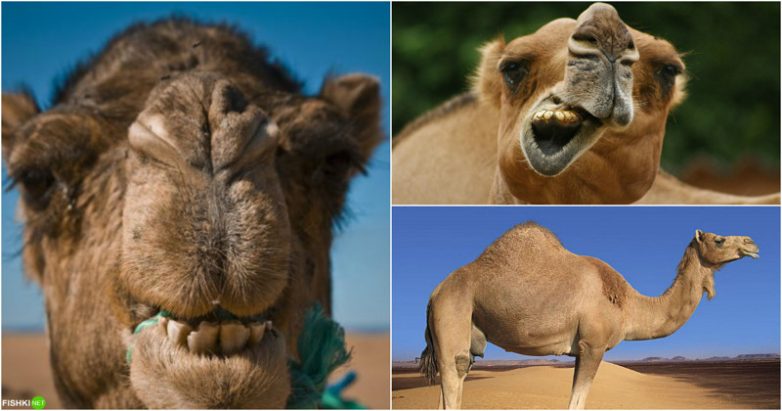
It is also called the one-humped camel or dromedar. But the name here is fully explained and comes from the Greek word δρομάς, which means "running".
Madagascar sucker

A small bat with suckers on the bases of the wing thumbs and the soles of the hind limbs. Listed in the Red Book. Inhabits only rain and secondary palm forests on east coast Madagascar.
Wide-eared folded lip
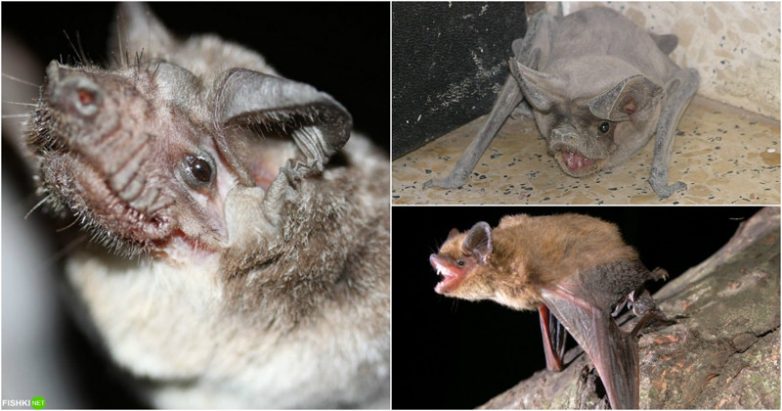
This is a very large bat with long pointed wings. Possesses very big ears, which are connected on the forehead by a leathery fold. Pretty ugly.
Goggle-eyed tarsier
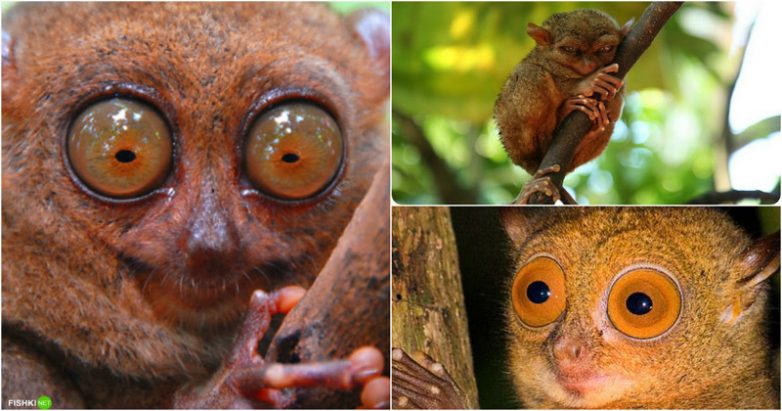
The goggle-eyed tarsier, a creature whose eyes weigh more than a brain. In addition, they practically do not rotate and do not see anything during the day. But the tarsier's head turns 360 degrees, at least in something they were lucky!
Blunt crocodile

The blunt crocodile got its name thanks to its short blunt muzzle. Although, the muzzle is pretty pretty. And look what eyes!
Potatuyka
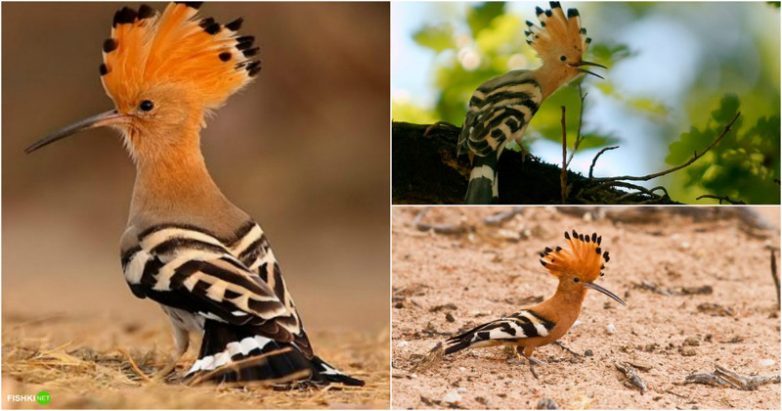
The coolest thing is that this is an ordinary hoopoe! The bird received the name hoopoe because of the characteristic sounds "up-up, ud-ud!" And here is the tatuyka ... Maybe someone will tell you?
Trilobite Han Solo

According to the official version, the trilobite got its name due to the fact that it was found in the Chinese province of Hunan, and Solo because it was the only representative of the species. But we understand why it was called that.
White-winged psychrolute
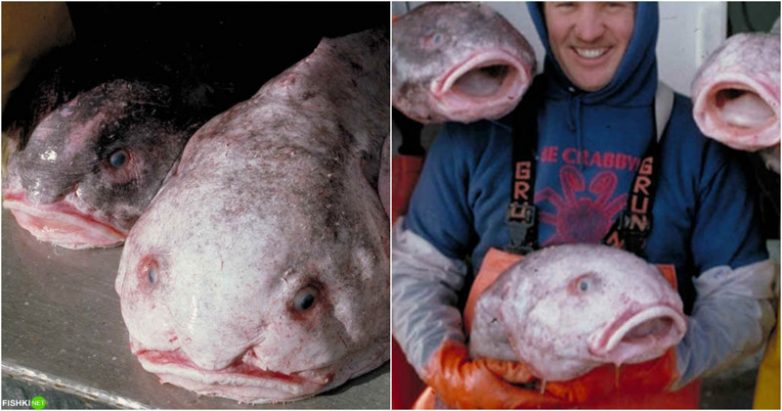
Deep sea fish, the closest relative of the famous drop fish. Quite a strange creature that often ends up in trawl nets.
Whiskered malacoptile
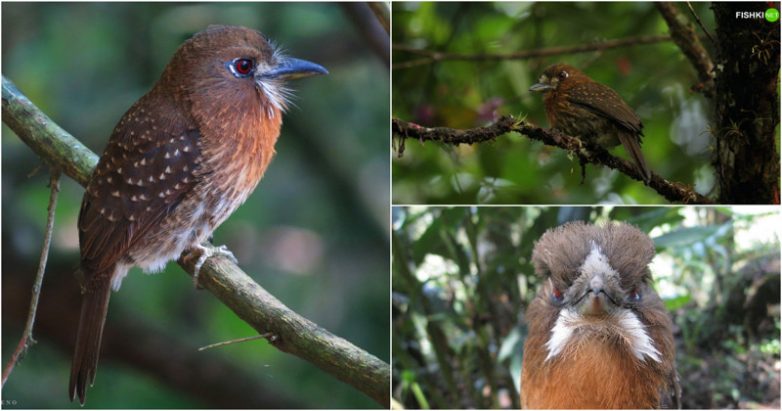
A bird of the puff family, of the order of woodpeckers. Funny and mustache in place!
Chocolate surgeon
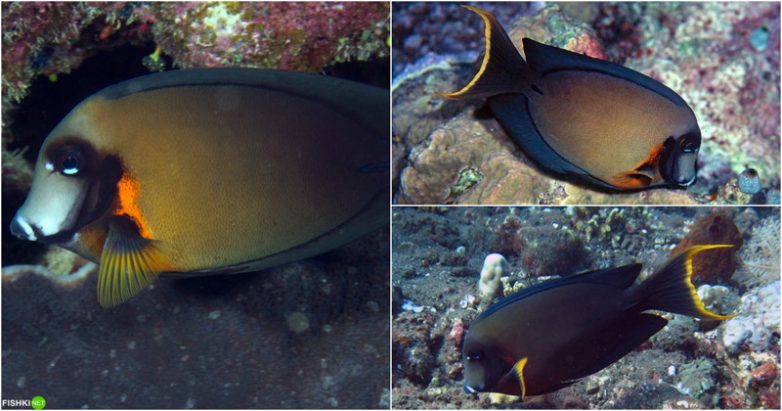
A beautiful fish that got its name from its chocolate hue. She is also called the red-striped surgeon. There are sharp thorns on the body of the fish. A quick blow of the tail can seriously injure a person, and therefore a surgeon.
Sea bat
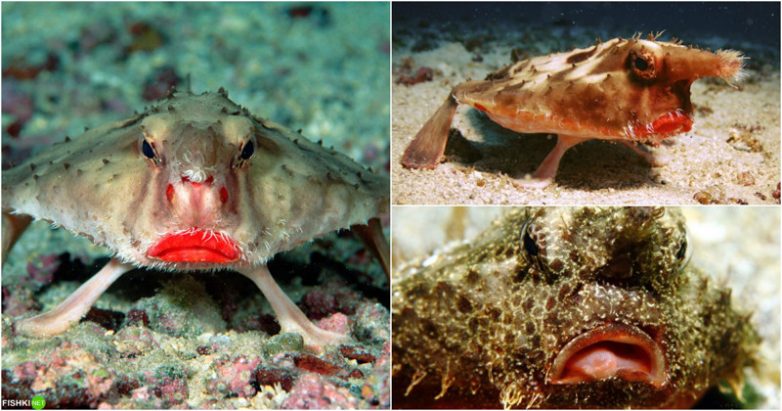
Here is such a wonderful creature!
Durukul
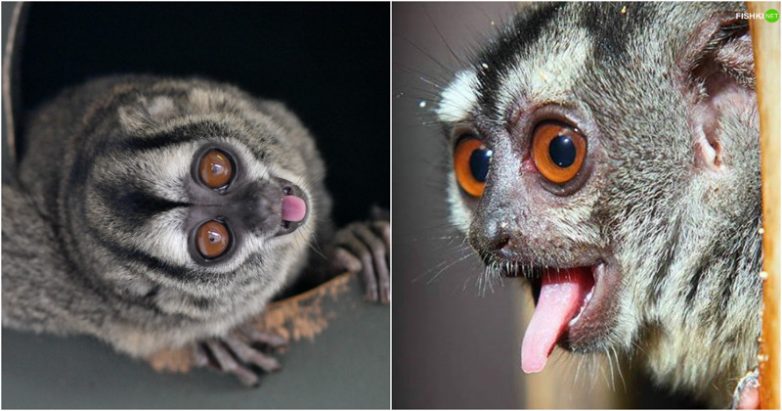
A little monkey that is only nocturnal. If you take her out into the light, then he will begin to hide and make plaintive sounds, as he blinds the monkey. For its large round eyes, it is also called an owl monkey.
